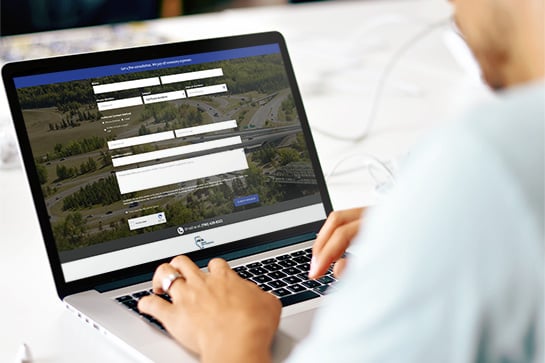Buses, such as those operated by the City of Edmonton and other municipalities, Red Arrow, Ebus, SunDog Tours and Cold Shot are “public carriers”, and as such, have heightened obligations to their passengers. The duty of the bus owner and bus driver is to carry bus passengers safely and to use all “due, proper and reasonable care and skill to avoid or prevent injury to the passenger.” In typical car accidents the injured person must show that the other driver was at fault. With public carriers, there is a “reverse onus”, and the public carrier must show that the bus was being driven in a “skilled and prudent manner”. Although the duty of care does not rise to the level of an insurer, if there is an error in judgment or lack of skill of the bus driver which amounts to negligence, the bus owner and driver will be liable to pay damages to compensate for the injuries to bus passengers. However, the damages assessed may be reduced if the passenger is found to have been contributorily negligent by, for example, walking to find a seat in a moving bus without holding onto railings, poles or straps for support.
An “accident” is not to be narrowly understood as only a collision between vehicles – a fall by a passenger on a bus, for example, will be an accident that may attract compensation. In Nice v. Calgary (City), 2000 ABCA 221, the Alberta Court of Appeal suggested that any incident on a bus that injures a passenger may be an “accident” which could attract compensation.
The Supreme Court of Canada decision of Day v. Toronto Transportation Commission [1940] SCR 433, established the standard of care for public carriers. Since then, the principles governing carrier liability have been considered by Alberta courts. A few of these decisions are summarized below.
Public carriers have a higher duty of care to their passengers
In Rances v Scaplen, 2008 ABQB 708, Greyhound bus passengers, and the bus driver, were severely injured in an accident on the highway between Edmonton and Grande Prairie when a fog bank suddenly occurred, and obscured all vision. The Greyhound bus plowed into two tractor-trailers that had, moments before, collided on the highway.
The first tractor-trailer was driven by Arsenault. He encountered the fog bank and slowed down to approximately eight to twelve kilometres per hour. The fog bank came on quickly, and Arsenault stated that it was “like looking through a piece of paper.” He was disoriented and travelling in both lanes, trying to find his bearings by the left lane yellow road markings. He did not pull over to the shoulder on the right as he was afraid the shoulder was too narrow, and he would roll into the ditch.
Arsenault was hit by a tractor-trailer driven by Bolton. Bolton had been driving on cruise control, which he disengaged when he hit the fog bank. He was travelling at 67 kilometres per hour at the time of the collision. Bolton tried to leave the cab by climbing out the window. While Bolton was still in his cab window, there was a second collision. The tractor-trailers were struck by the Greyhound bus driven by Scaplen, which was travelling at between 60 and 85 kilometres per hour.
As a result of the collisions multiple people were injured and brought claims, and the claims went to trial on the issue of liability.
The drivers and owners of the tractor-trailers were each held to be 30% liable, and Scaplen and Greyhound were held to be 40% liable. The court found that as a public carrier, the Greyhound defendants had a higher duty of care and that Scaplen had been driving much too fast given the fog conditions and had been “overdriving his visibility.”
When bus passenger actions contribute to their injuries (contributory negligence)
In Nice v. Calgary (City), 2000 ABCA 221, 55-year-old Margaret Nice was injured when the bus she had just boarded pulled away from the bus stop, then made a sudden stop. Ms. Nice was in the process of making her way down the bus aisle, looking for a seat. She did not hold onto any of the railings or straps provided on the bus as she walked. She fell forward, using her outstretched left arm to break the fall. She injured her shoulder and needed surgery.
Our Court of Appeal recognized the higher duty of care for public carriers and the shifting of the burden to the defendant to prove the bus was being operated in a skilled and prudent manner. Further, the Court referenced the “rebuttable presumption” set out in s. 180 of the Alberta Highway Traffic Act (now s. 186 of the Traffic Safety Act, RSA 2000, c T-6). The presumption, which can be rebutted, is that if a person is not in a vehicle and is injured as a result of a vehicle in motion, the injury arose “entirely or solely” through the negligence or improper conduct of the driver of the motor vehicle.
The Court awarded Ms. Nice one-half of her assessed damages, as she was found to be contributorily negligent for not holding onto the railings or straps.
When an unknown driver contributes to an event that causes injury on a public carrier
In Brzak v. John Doe 1, 2000 ABQB 588, a bus came to a sudden stop because an unidentified vehicle cut the bus off. A passenger was injured. Because the vehicle was unidentified, the Administrator of the Motor Vehicle Accident Claims Fund was sued as well as the bus driver and bus owner. In this case, the Administrator admitted that the unknown driver was negligent, and the bus owner and driver were not held to be responsible as the bus driver had done all that he could to avoid the collision. If the identity of the offending driver who cut off the bus had been known, the driver and the owner of the vehicle would have been named as defendants in the lawsuit instead of the Administrator.
About CAM LLP injury lawyers
Since 1962, our lawyers have been achieving precedent-setting results for injured Albertans. We have extensive experience in assisting passengers who have been injured on a “public carrier” bus, such as those operated by the City of Edmonton and other municipalities, and Red Arrow.
We understand the additional factors that come into play if a client is injured while riding as a passenger on a public carrier. We will assess all the facts, explain your situation, determine who is potentially liable to pay damages for your injuries, and take the necessary steps to secure fair compensation.
Years of experience evaluating claims, negotiating settlements with insurance companies, and helping injured people get fair compensation makes a difference.
Please contact us for a free consultation.

